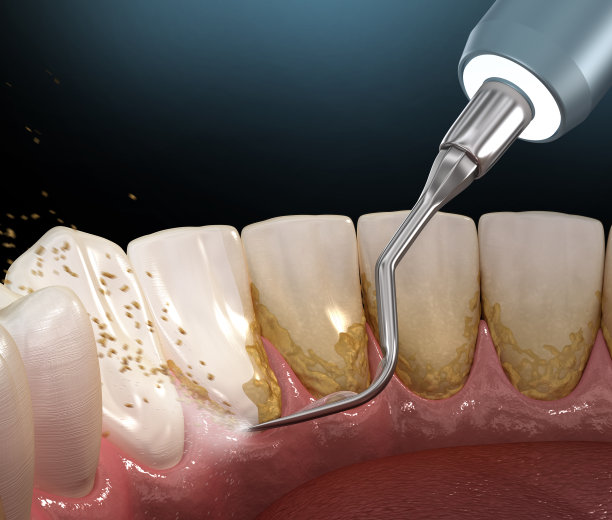Essential Guidelines to Follow for a Safe and Successful Root Canal Treatment Procedure to Ensure Optimal Dental Health
Summary: Ensuring optimal dental health through a safe and successful root canal treatment procedure is paramount for anyone facing dental issues. This article outlines essential guidelines that include patient preparation, choosing the right dentist, understanding the procedure, and maintaining post-treatment care. Each section elaborates on vital aspects that contribute to an effective treatment plan. By following these guidelines, patients can minimize discomfort, expedite recovery, and achieve lasting results. Ultimately, a thorough understanding of the root canal process leads to better dental health outcomes.
1. Preparing Yourself for the Treatment

Preparation for a root canal treatment starts with gaining a thorough understanding of the procedure. Knowledge about what to expect can significantly reduce anxiety. Patients should ideally ask their dentist any questions regarding the process, including potential symptoms and recovery timelines. This knowledge allows patients to mentally prepare and be more at ease on the day of the treatment.
Another vital aspect of preparation is informing your dentist about any underlying health conditions or medications you are currently taking. A complete medical history helps the dentist assess risks and devise a treatment plan that is tailored to you. This open communication fosters a more effective treatment process.
Moreover, arranging for post-treatment transportation is often overlooked but essential. Depending on the complexity of the procedure and the sedation used, some patients may experience grogginess following the treatment. Having someone to drive you home can alleviate possible stressors, ensuring you arrive home safely after your appointment.
2. Choosing the Right Dentist for You
Selecting the right dentist is a critical step towards a successful root canal treatment. Patients should seek dental professionals who specialize in endodontics — the branch of dentistry that focuses on dental pulp and surrounding tissues. A qualified endodontist brings expertise and advanced techniques to ensure a safe and effective procedure.
Additionally, word-of-mouth referrals can be invaluable. Recommendations from friends, family, or online reviews can guide you towards trustworthy dental professionals. Take the time to investigate their credentials, experience, and patient satisfaction rates. This research will empower you to make an informed decision.
Experiencing a consultation before scheduling the actual treatment is also advisable. During this meeting, you can discuss your concerns and evaluate the dentists communication style and approach. Feeling comfortable and confident in your dentists abilities plays a significant role in the overall success of your treatment.
3. Understanding the Root Canal Procedure
A root canal procedure typically consists of several stages, each executed with precision. The first step involves numbing the tooth and surrounding area to ensure that the procedure is painless. An anesthetic can play a significant role in alleviating anxiety, making the patient feel more relaxed during the process.
After the anesthesia takes effect, the dentist will access the pulp chamber and clean out the infected tissue. This phase is crucial as it eliminates decay and prevents the spread of infection. Understanding that this is a routine and controlled procedure can help pacify fears surrounding potential pain or discomfort.
Finally, the dentist will fill the now-empty pulp chamber with a biocompatible material. This step seals the tooth and prevents future infections. Patients should be informed that a follow-up visit may be necessary for permanent crown placement, securing the long-term integrity of the tooth. Proper understanding builds patient trust and compliance throughout the entire process.
4. Maintaining Post-Treatment Dental Care
Post-treatment care is crucial in ensuring the success of your root canal procedure. Initially, it is essential to follow your dentists instructions regarding medications and follow-up appointments. Anticipating possible post-procedure pain or discomfort can prepare you for this phase, and the prescribed analgesics can help manage that discomfort effectively.
Moreover, practicing good oral hygiene post-treatment is paramount. Regular brushing and flossing are vital to maintaining not just the treated tooth but overall oral health. Avoiding hard foods and sticky candies for the first few days can also aid the healing process and protect the treated tooth from excessive stress.
Lastly, scheduling regular dental check-ups can help to monitor the health of your tooth and surrounding areas. Continued follow-up with your dentist ensures that any complications can be addressed promptly, promoting optimal dental health long after the root canal treatment.
Summary:
Ultimately, understanding the essential guidelines for a root canal treatment provides patients with the knowledge needed for a safe and successful experience. From preparation and selecting the right dentist to comprehending the procedure and maintaining post-treatment care, following these guidelines significantly influences the outcome. With an informed approach, patients can achieve better dental health and a more comfortable treatment experience.
This article is compiled by Vickong Dental and the content is for reference only.



